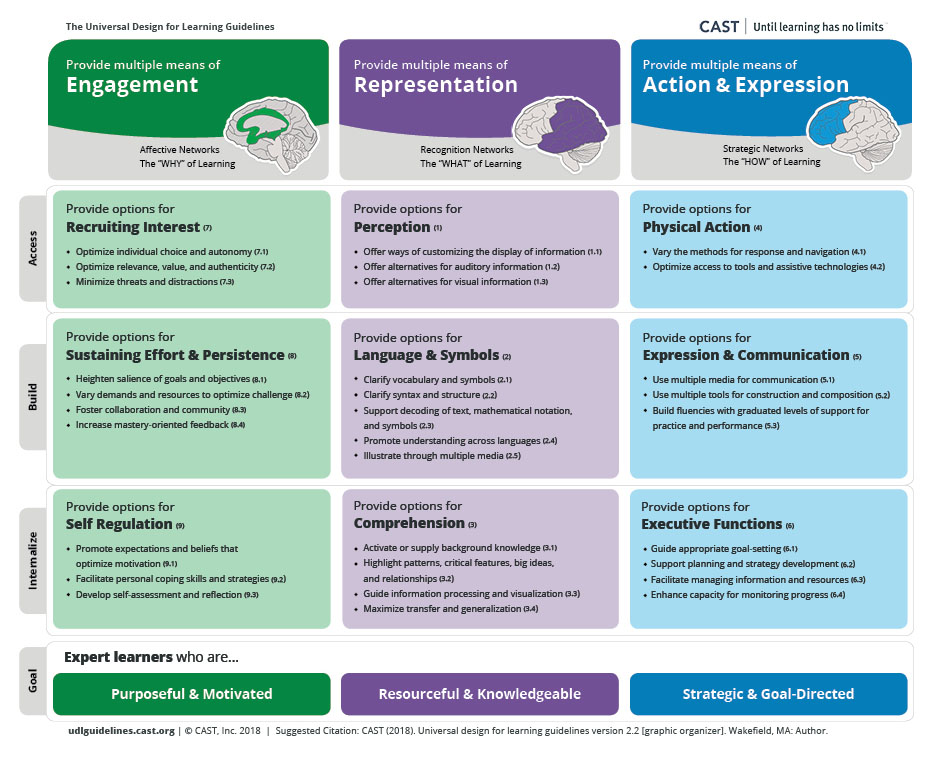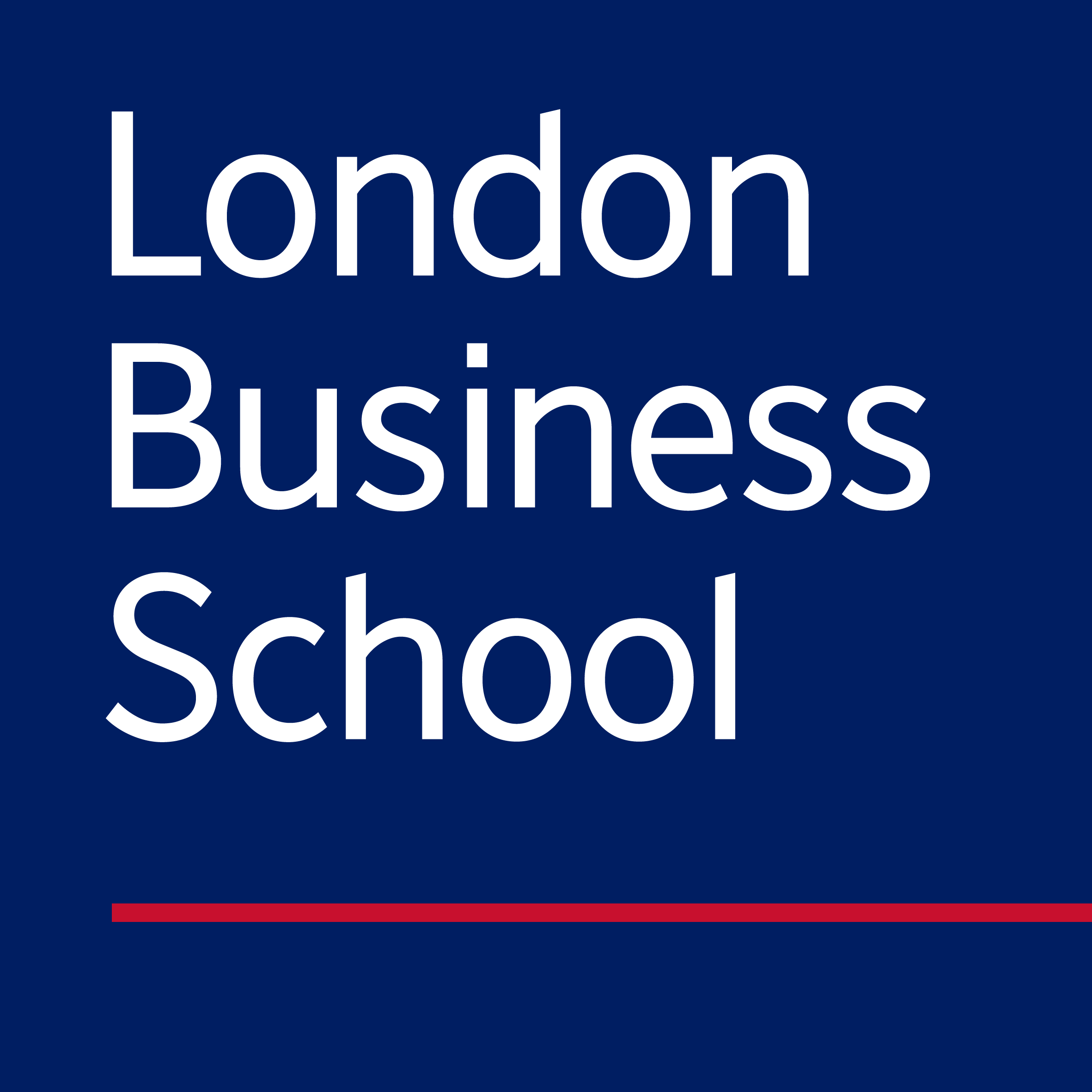Applying Universal Design for Learning
Fostering an inclusive online educational environment.
One of the challenges that many educational institutions are facing when designing for online learning is to account for a vastly diverse cohort of learners. Learners could be international students, learners with different socio-economic and cultural backgrounds, mature learners, with full-time jobs, with families, and learners with or without disabilities. Moreover, individual learners differ in terms of their preferred approach to learning, their abilities, and their motivations for learning.
With so many differences and characteristics, a one-size-fits-all model of curriculum design for online classes cannot successfully accommodate the diversity. As a result, learners may feel marginalized, limiting their potential learning. The practice of designing with an “average” learner in mind, a learner who is expected to engage and learn on the same terms, creates barriers for all learners. That is, as a dominant culture guides the design of the curriculum, and all learners do not fit into nor match the characteristics of that profile, they don't have their needs considered in the design.
Therefore, it is essential to design a curriculum that creates a truly inclusive educational environment and meets the needs of all learners, giving them equal opportunities to learn and build upon their strengths to maximize their potential.
How can we create an inclusive educational environment online?
When creating an inclusive environment, we first need to understand the diverse needs of our learners and then accommodate these needs to enable the equal opportunity to engage and be successful. Universal Design for Learning (UDL) is a framework that uses the design and development of the curriculum to support the creation of an inclusive learning environment and can be applied early in the design of curriculum.
(UDL) was created by the Center for Applied Special Technology (CAST) and focuses on removing barriers to learning. UDL draws on the fields of neuroscience and the learning sciences. It focuses on the diversity of learners, guides the design of learning goals, materials, methods, and policies. Like all learning theories and frameworks, UDL holds assumptions and beliefs about learning; learning is the dynamic interaction between an individual and an environment or context.
The framework is based on three guidelines and offers suggestions with the goal of creating meaningful, engaging, challenging, and accessible learning opportunities for all students. These suggestions can be applied to any discipline or domain and even though UDL is usually associated with the use of technology in education, it is important to stress that it’s also about pedagogy, instructional practices, and for students with or without disabilities.
The principles of Universal Design for Learning
UDL consists of three principles that are involved in any learning situation and concern:
- what is learned (Representation)
- how it is learned (Action and Expression)
- why is it learned (Engagement)
They translate to the three primary functional networks of the mind; recognition, strategic, and affective. The main objective of Universal Design for Learning is that all learners are successful in their learning and can become “expert” learners. In other words, the goal of UDL is for learners to become “purposeful and motivated, resourceful and knowledgeable, and strategic and goal-directed” in a learning situation.
Learners have a variety of recognition networks and hence pick up information in multiple ways. The principle of representation is concerned with what information do different learners perceive in a given context and how they transform it into useful knowledge. Many factors can influence learners’ understanding, such as physical and mental abilities, language barriers, cultural differences etc. These are important to consider when designing an educational experience as they result in learners approaching and processing information in different ways and reaching different conclusions with the same information.
Learners also express what they know and act on that information in many ways. The principle of action and expression is concerned with learners having different strategic networks that account for how learners can demonstrate what they have learned. Some of these strategies for making connections between information are practice and organization and it’s crucial to consider that learners differ in terms of their characteristics, competencies, and strategies.
In addition, learners have different personalities and their motivations for participating in a learning situation vary. The principle of engagement is concerned with the affective networks and how these are linked to learners’ motivations, engagements, and challenges. For example, some learners see social interactions while other learners might prefer to work alone.

Download the UDL Guidelines graphic organizer
How to incorporate Universal Design for Learning into your Curriculum
UDL includes guidance on how to turn these three principles into practice through the early design of curricula. Specifically, it’s suggested to provide multiple means of engagement, multiple means of representations, and multiple means of expression. Therefore, learners will able to access the information, build on it, internalize it, and maximize their learning.
Providing multiple means of representation
For all learners to perceive information and transform it into useful knowledge it’s suggested to provide multiple means of representation to ensure that learners can equally access all the information in a learning environment. Some suggestions are to provide alternatives and allow learners to adjust the learning environment according to their needs.
For example:
| usual practice | alternatives |
| audios |
|
| restricted learner control in the learning environment |
|
| file types non editable by learners (.pdf) |
|
| information in one language that engage learners in decoding |
|
| limited supply of background knowledge |
|
| limited variation of learning strategies |
|
Providing multiple means of action and expression
For learners to demonstrate what they have learned, it’s suggested to provide multiple means of action and expression. That could be achieved by a variation of activities and learner interactions throughout the course delivery. Some ways to vary the activities are:
| use assistive technologies |
|
| use multiple media |
|
| use multiple tools for communication, construction, and composition |
|
| provide support in learning strategy development |
|
| customized feedback |
|
| flexible assessment and self-assessment strategies |
|
Providing multiple means of engagement
For learners to engage with the content, it’s suggested to provide multiple means of engagement. Some ways to promote learner interest, motivation, and persistence are:
| ensure that learners have a clear purpose of the lesson |
|
| capture learners’ interest |
|
| foster self- regulation |
|
| maintain effort and persistence |
|
References
Black, S., Krahmer, D. and Allen, J., 2018. Part 6: Diversity and Inclusion. The Reference Librarian, 59(2), pp.92-106.
Cast.org. 2017. CAST: About Universal Design for Learning. [online] Available at: <https://www.cast.org/impact/universal-design-for-learning-udl> [Accessed 21 September 2021].
Learning Innovation Exchange. 2021. Concept Maps. [online] Available at: <https://teaching.london.edu/development/learning-technologies/concept-maps/> [Accessed 24 September 2021].
Moore, S., 2007. David H. Rose, Anne Meyer, Teaching Every Student in the Digital Age: Universal Design for Learning. Educational Technology Research and Development, 55(5), pp.521-525.
Mccombs, Barbara. 2008. From One-Size-Fits-All to Personalized Learner-Centred Learning: The Evidence. The F. M. Duffy Reports. 13.

